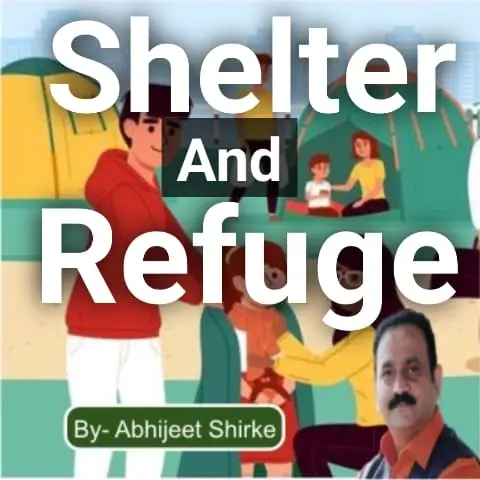
In an increasingly interconnected world, conflicts, natural disasters, and displacement have become unfortunate realities that impact millions of people worldwide. Displaced people and refugees often find themselves in dire situations, stripped of their homes, belongings, and security. In response to this global crisis, various humanitarian initiatives have emerged to provide shelter, basic necessities, and support to these vulnerable populations. This essay explores the importance of these initiatives and examines how they offer aid to those affected by adversity.
The Need for Shelter and Refuge
Displaced persons and refugees face extreme challenges when they lose their homes due to conflicts, natural disasters, or other emergencies. They are often left without shelter, exposed to harsh weather conditions, and at risk of physical harm. Adequate shelter is a fundamental human need, providing safety, security, and a sense of normalcy. Initiatives that offer shelter aim to restore dignity and provide a foundation for individuals and families to rebuild their lives.
Humanitarian Organizations and Initiatives:
Numerous humanitarian organizations and initiatives are dedicated to providing aid to displaced people and refugees. Organizations like the United Nations High Commissioner for Refugees (UNHCR) and non-governmental organizations (NGOs) like the International Rescue Committee (IRC) work tirelessly to ensure that those in need receive shelter, food, clean water, and medical care. These organizations collaborate with governments, local communities, and other stakeholders to create comprehensive solutions for displaced populations.
Emergency Shelter Solutions:
Emergency shelter options are crucial in the early aftermath of a disaster or war. These solutions include temporary shelters like tents, tarpaulins, and emergency housing units. Organizations such as ShelterBox specialize in providing these resources to displaced populations quickly. These emergency shelters offer immediate protection and comfort until permanent solutions are in place.
Transitional Shelter and Long-Term Solutions:
Transitional shelters help to bridge the gap between emergency relief and permanent housing. These shelters offer more durable and semi-permanent solutions that can last several years. They enable displaced individuals to rebuild their lives and communities in a stable environment. Initiatives like Habitat for Humanity focus on providing safe and affordable housing for those affected by disasters or conflict.
Community Support and Integration
Beyond physical shelter, initiatives also prioritize community support and integration. Displaced people and refugees often face social isolation and discrimination. Organizations work to create spaces where individuals can access education, healthcare, and vocational training. By promoting self-sufficiency and resilience, these initiatives empower individuals to rebuild their lives and contribute positively to their new communities.
Challenges and Future Directions:
Despite the remarkable efforts of humanitarian initiatives, challenges persist. Insufficient funding, political barriers, and the complex nature of conflicts and disasters can hinder the effectiveness of aid efforts. Going forward, collaboration between governments, international organizations, NGOs, and local communities will be crucial to overcoming these challenges and ensuring sustainable solutions for displaced populations.
Humanitarian aid initiatives provide shelter and refuge, restoring hope and dignity to those affected by conflicts, natural disasters, and displacement. It restores their hope and dignity. These initiatives offer not only physical shelter but also a lifeline for displaced persons and refugees to rebuild their lives, integrate into new communities, and contribute to a brighter future. As we move forward, it is imperative that we continue to support and enhance these initiatives to create a more inclusive and compassionate global society.